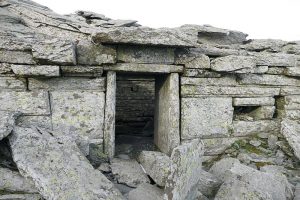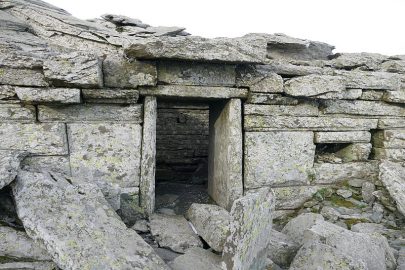Mt. Olympus, the Peloponnesian War, Pericles, Athens, and, of course, the Parthenon. When one considers ancient Greece, these are only a few of the topics that usually spring to mind. The heroic age of gods and men, the historical wars between Greek city-states, powerful strategoi and their prominent cities and, of course, architectural feats beyond compare. What does not spring to mind, however, are the mysterious megalithic structures the Greeks call drakospita, or “dragon houses”.
Megalithic Architecture of the Dragon Houses
Likely dating to the Preclassical period of ancient Greece, the dragon houses of Euboea are among the mysteries of the past which have yet to be fully understood. They first gained international attention when British geologist John Hawkins took note of the strange structures while ascending Mount Ochi (also written as Oche) on October 21, 1797. Although many archaeologists have been drawn to the dragon houses over the years, they have yet to explain them.
Resembling the stepped pyramid of Djoser in Pre-Dynastic Egypt and the temple complexes of Pre-Columbian Teotihuacan, these megalithic houses are structures built without mortar. Small, thin, mostly flat stones make up the buildings, stacked atop one another, kept in place with the use of jambs and lintels. Large megaliths are used in various places throughout the dragon houses, usually toward the roofs, positioned in a fashion that is similar to what is seen at Stonehenge.
Inveraray Castle: An ancient archive treasure trove (video)

While little is understood of these dragon houses, the number of the structures is far more than expected. Around twenty-three of these houses exist on the island of Euboea—most between Mounts Ochi and Styra—each building made of megaliths. In fact, scholars are constantly boggled by the sheer size and weight of the single megalith resting on two equally large post stones, together forming a doorway. How this megalith could have been lifted and placed atop the posts is as much a mystery as the reason behind the building of these structures.
It should further be noted that, not only is the reason behind the dragon houses a consistent question among scholars, but their location is equally astonishing. These dragon houses are situated at very high altitudes, making the weight and size of the megaliths even more shocking. The builders had to find a way to transport such large stones from a much lower altitude, and then construct the houses at a height at which it was likely unpleasant to work. Furthermore, each structure possesses a Pantheon-like opening in the roof, likely intended for natural sun or moonlight to illuminate the interior of the buildings.
Continue here: Ancient Origins
Ask me anything
Explore related questions





